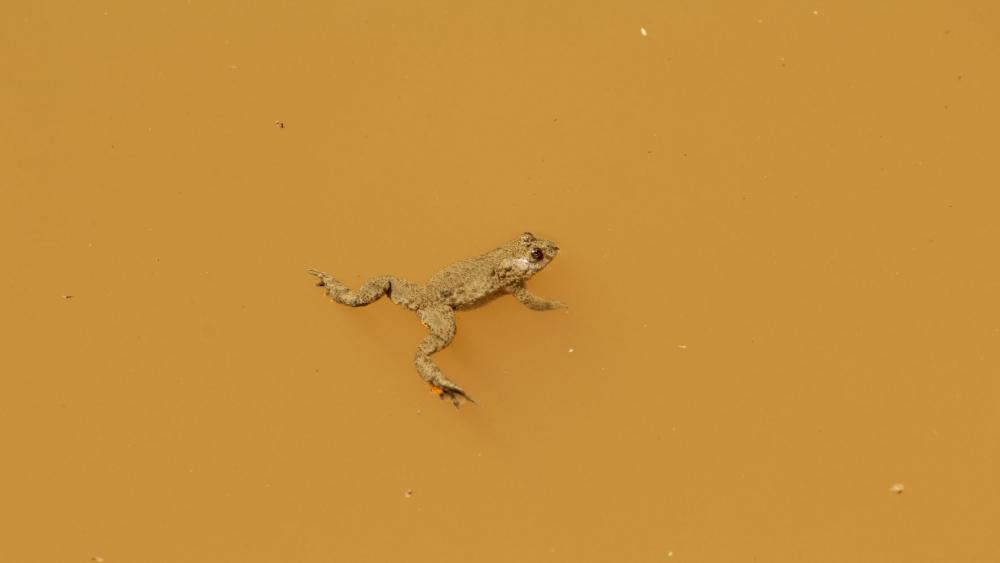
One of the most endangered amphibian species is the yellow-bellied toad (Bombina variegata), originally a floodplain species, which is now mainly found in replacement habitats such as excavations. | Photo: Szabó Csilla/Federaţia Universitară Maghiară din Cluj-Napoca (Public Domain)
Among amphibians and reptiles, the proportion of endangered species is higher than in any other species group in Germany. The populations of all reptile species and almost all amphibian species have declined over the past 120 years. In the last 20 years, the situation has further deteriorated for most of these species. Half of the 20 amphibian species studied are endangered, and the proportion is even higher for reptiles, at 9 out of 13. The greatest threat to amphibians and reptiles is habitat loss.
Amphibians are particularly sensitive indicators of the state of our ecosystems. They often inhabit wet terrestrial habitats and, as larvae, usually also aquatic habitats, and feed on insects, snails and worms. As a result, they are connected in many ways to numerous ecosystem components: the decline of insects affects them just as much as the accumulation of pesticides in the food web.
One of the species experts who compiled the current Red Lists for reptiles and amphibians from 2018 to 2019 is IGB researcher Matthias Stöck. He and colleagues have, for example, compiled information on the European green toad (Bufotes viridis) which is endangered in Germany due to ongoing habitat loss in the floodplains, the removal and devaluation of small water bodies and wet areas, fertilisers and pesticides in the vicinity of spawning grounds, and fish stocking in ponds. In addition to the endangerment situation, the authors have always named a package of protective measures.
Furthermore, the national responsibility for the global conservation of species with important occurrences in Germany was identified. Such an increased responsibility for Germany exists, for example, for the European tree frog (Hyla arborea), whose population is declining. The threat to the population of the European tree frog also affects other amphibian species: including the drying up of temporary shallow waters in riverine landscapes as a result of climate change, the increasing use of ponds for fisheries and, above all, the acute water pollution caused by industrial agriculture.
About the Red Lists in Germany
The ‘Red Lists of Germany’s Animals, Plants and Fungi of Germany’ continue to be a crucial (bureaucratic) basis for the protection of biodiversity in Germany. They document the status of species and the development of biodiversity, as well as indirectly the impact of human activities on nature. The Red Lists show where there is a need for action. They enable nature conservation measures to be weighted, priorities to be set for implementation and at the same time point to research needs.
Parts of this text are based on the joint press release of the Red List Centre (RLZ) and the Federal Agency for Nature Conservation (BfN) on the occasion of the publication of the current Red Lists for reptiles and amphibians.




